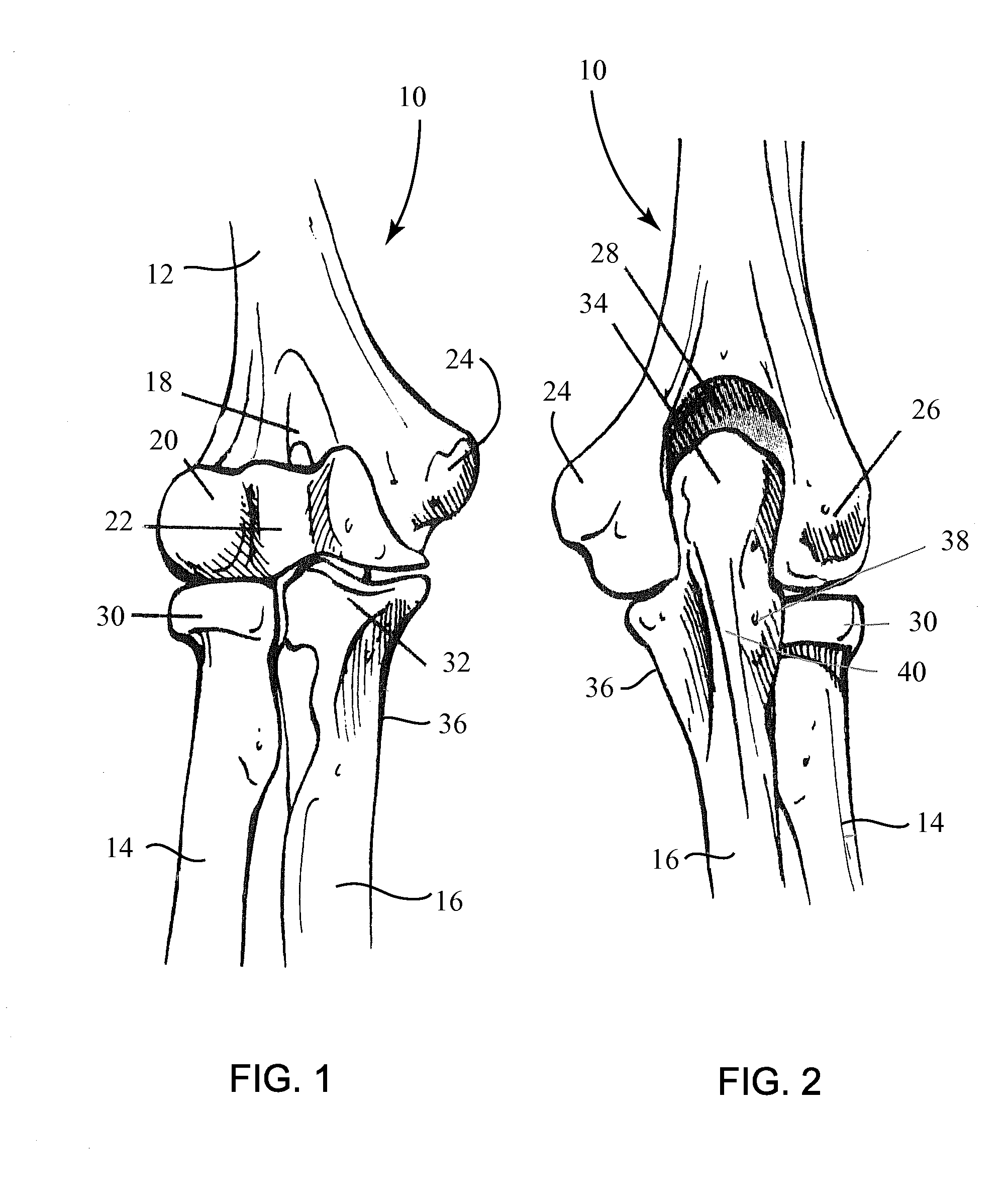Fracture Fixation Plate for the Coronoid of the Proximal Ulna
a technology of proximal ulna and fixation plate, which is applied in the field of surgical devices and methods for the internal fixation of fractured bones, can solve problems such as patient discomfort and complications, and achieve the effect of easy and safe reconfiguration inside the patien
- Summary
- Abstract
- Description
- Claims
- Application Information
AI Technical Summary
Benefits of technology
Problems solved by technology
Method used
Image
Examples
Embodiment Construction
[0090]FIG. 1 is an anterior (front) view and FIG. 2 is a posterior (back) view of the bones of the human elbow joint 10: the distal humerus 12, the proximal radius 14 and the proximal ulna 16. The distal humerus 12 includes the coronoid fossa 18, the capitellum 20, the trochlea 22, the medial epicondyle 24 and the lateral epicondyle 26, and the olecranon fossa 28 therebetween. The proximal radius 14 includes the radial head 30. The proximal ulna 16 includes the coronoid process 32 (FIG. 1) and the olecranon 34 (FIG. 2) which articulates within the olecranon fossa 28 between the lateral and medial epicondyles 24, 26 of distal humerus 12. Each of the distal humerus 12, proximal radius 14 and proximal ulna 16 are susceptible to a large variety of fractures, such as during a fall.
[0091]The present system for the repair of elbow fractures may include a plurality of anatomically specific bone plates and a plurality of fasteners for the attachment of the plates to the bone. The system may ...
PUM
 Login to View More
Login to View More Abstract
Description
Claims
Application Information
 Login to View More
Login to View More - R&D
- Intellectual Property
- Life Sciences
- Materials
- Tech Scout
- Unparalleled Data Quality
- Higher Quality Content
- 60% Fewer Hallucinations
Browse by: Latest US Patents, China's latest patents, Technical Efficacy Thesaurus, Application Domain, Technology Topic, Popular Technical Reports.
© 2025 PatSnap. All rights reserved.Legal|Privacy policy|Modern Slavery Act Transparency Statement|Sitemap|About US| Contact US: help@patsnap.com



